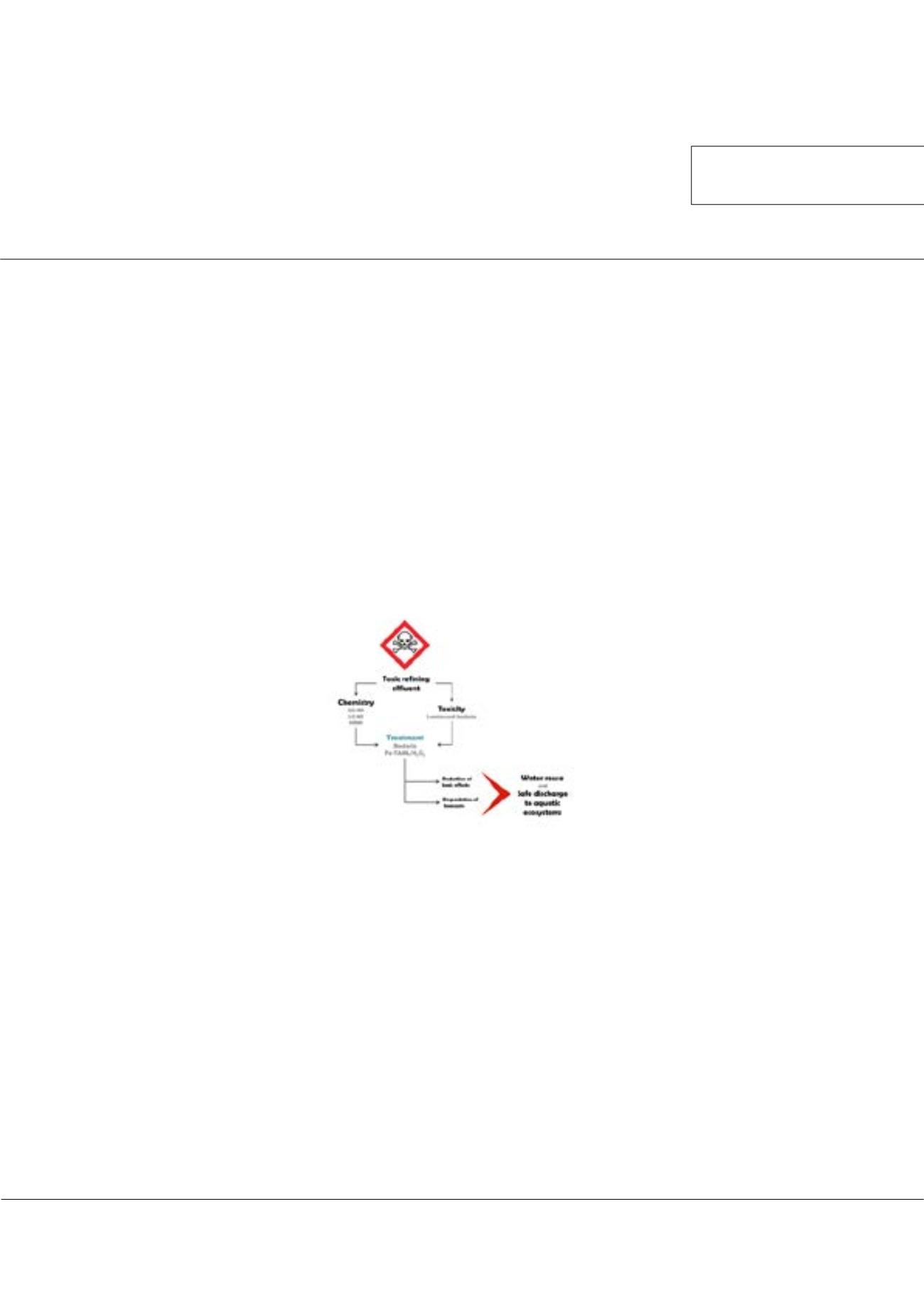

Page 60
conferenceseries
.com
Volume 2
Environment Pollution and Climate Change
ISSN: 2573-458X
Climate Change 2018 &
Global ENVITOX 2018
October 04-06, 2018
October 04-06, 2018
London, UK
16
th
Annual Meeting on
Environmental Toxicology and Biological Systems
&
5
th
World Conference on
Climate Change
JOINT EVENT
Unravelling the chemistry behind the toxic effects of refining wastewater: Characterization and
remediation
Angela Pinzon-Espinosa
and
Rakesh Kanda
Brunel University London, UK
R
efining transforms crude oil into marketable products with high commercial value, providing a third of the global energy
requirements and numerous raw materials. The process, however, emits vast amounts of wastewater that can have harmful
effects on wildlife and human health but the link between chemistry and observed toxicity is fragile because little progress has
been made in determining causative agents. Consequently, current treatment technologies are not targeting key toxicants nor
providing safe effluents. Here we show that naphthenic acids are important components of refining wastewater, resulting from
the processing of heavy crude oil, and that they have an important contribution to the toxic effects exerted by these effluents.
Furthermore, we found that their chemical stability makes them highly resistant to remediation using bacteria and Fe-TAML/
H
2
O
2
systems under laboratory conditions, and only sequential aliquots of Fe-TAML catalysts and H
2
O
2
showed to degrade
naphthenic acids (50 ppm) within 72 hours. We anticipate our results to be a starting point for better environmental regulations
relevant to refining wastewater resulting from heavy crude oil, as naphthenic acids are not currently considered in the effluent
guidelines for the refining sector. Furthermore, the degradation of naphthenic acids under mild conditions using Fe-TAML/
H
2
O
2
systems indicates that these catalysts hold promise for the remediation of refining wastewater in real-life scenarios.
Recent Publications
1. Pinzón-Espinosa A, Martinez-Matamoros D, Castellanos L, Duque C, Rodríguez J, Jiménez C, Ramos F (2017) Cereusitin
A, a cyclic tetrapeptide from a Bacillus cereus strain isolated from the soft coral Antillogorgia (syn. Pseudopterogorgia)
elisabethae. Tetrahedron Letters, 58(7), 634 – 637.
2. Gutiérrez V, Pinzón-Espinosa A, Casas J, Martínez M (2008) Determination of cellulolytic activity in soil from Stevia
rebaudiana Bertoni crops. Agronomía Colombiana, 26(3), 497 – 504.
Biography
Angela Pinzon-Espinosa is a Water Scientist working at the interface between Microbiology and Chemistry. Her research interests are directed towards the link between
water quality, health, environment, and the different strategies to tackle water pollution. Her current research focuses on the detection and identification of toxic chemicals
in industrial effluents using luminescent bacteria, and the development of low-cost clean-up technologies targeting refining chemicals. She is particularly interested in the
science behind pollution control and the use of science for regulatory purposes, but keen on expanding her expertise to environmental management aiming to provide
clean and safe water.
angela.pinzonespinosa@brunel.ac.ukAngela Pinzon-Espinosa et al., Environ Pollut Climate Change 2018, Volume 2
DOI: 10.4172/2573-458X-C1-002
Figure:
Analysis of petroleum refining effluents conducted to identify contaminants causing toxicity towards luminescent bacteria (Vibrio fischeri), and
subsequent evaluation of bacteria (Pseudomonas putida) and synthetic enzymes (Fe-TAML activators) as low-cost clean-up technologies to provide
high-quality effluents suitable for recycling or safe discharge.
















